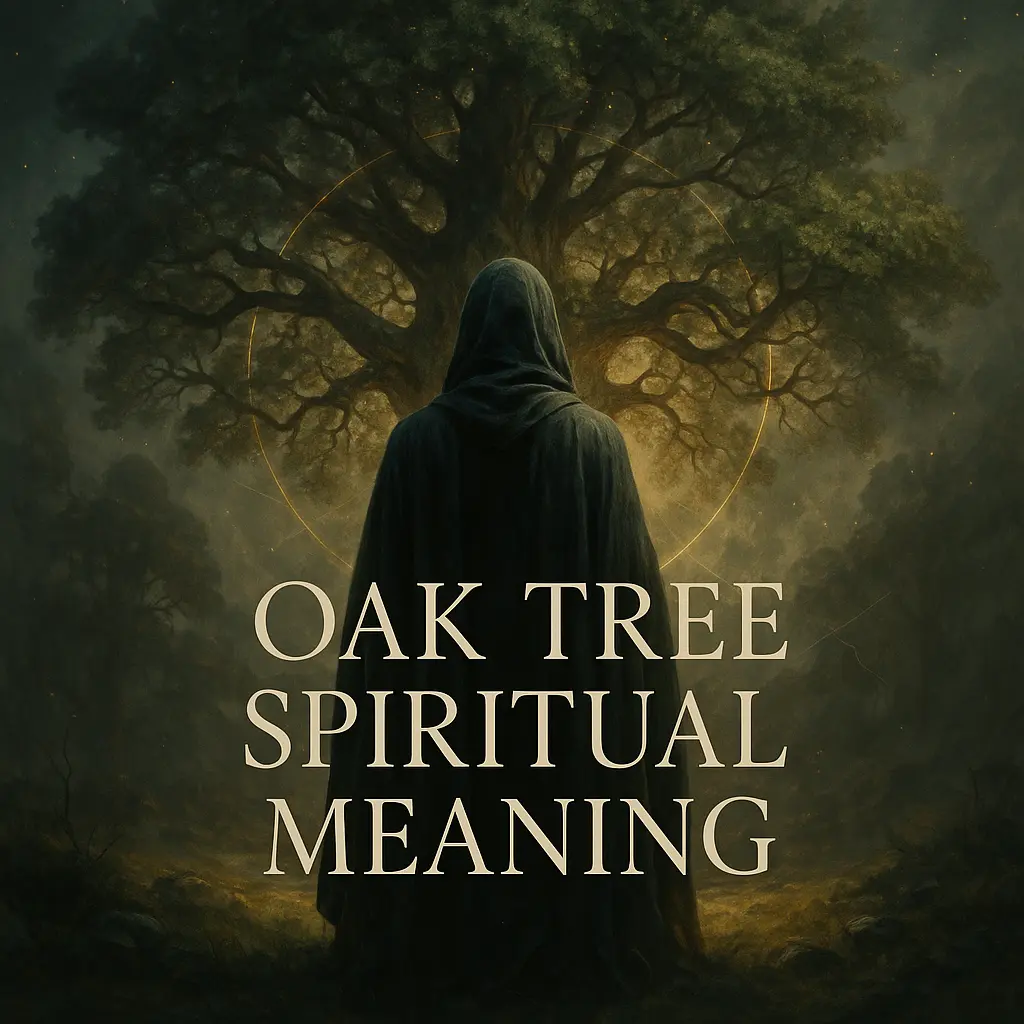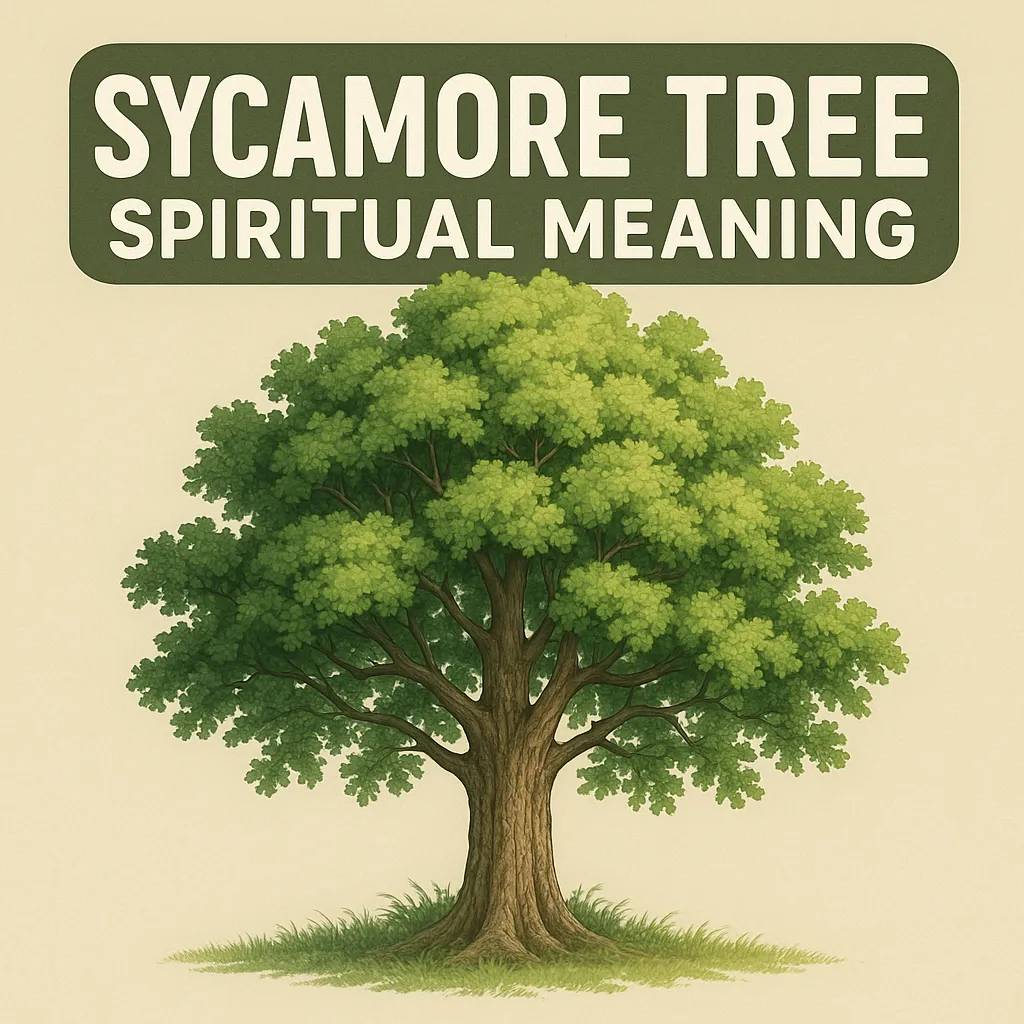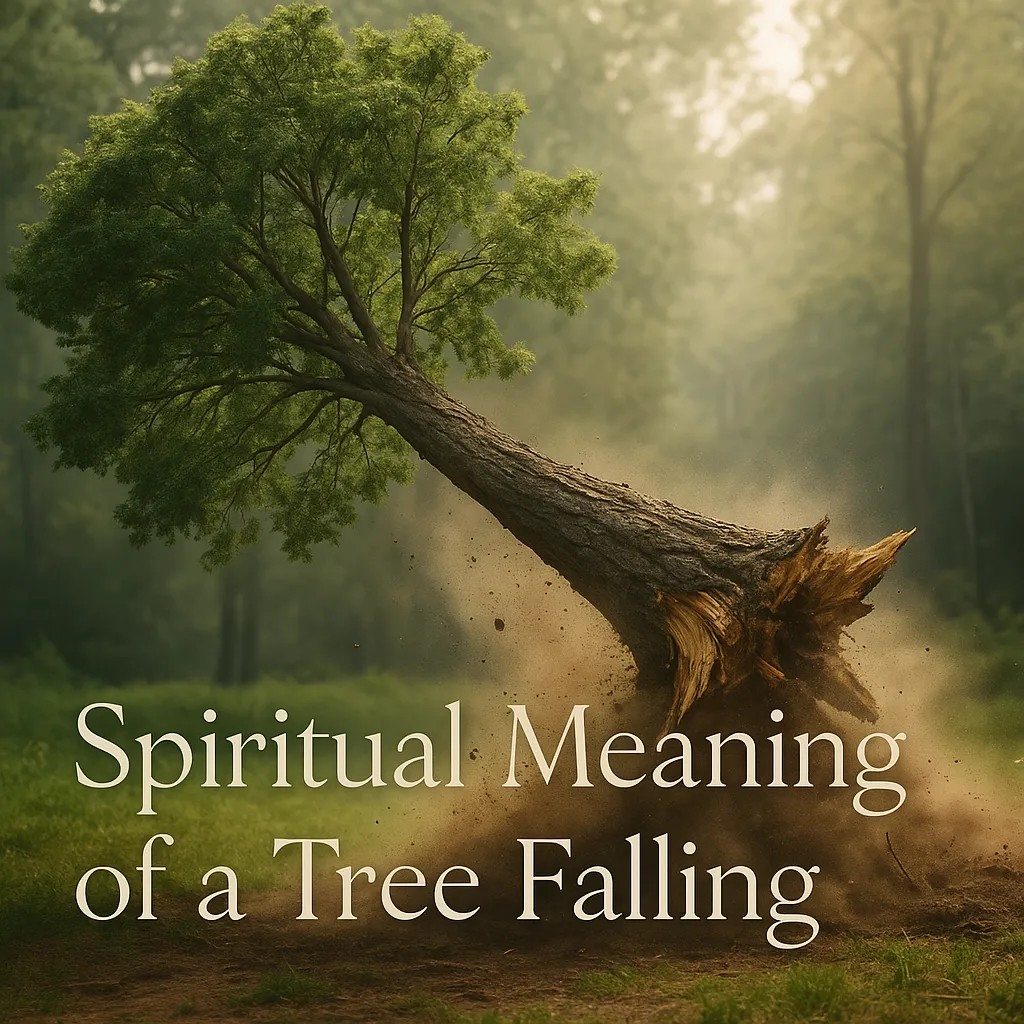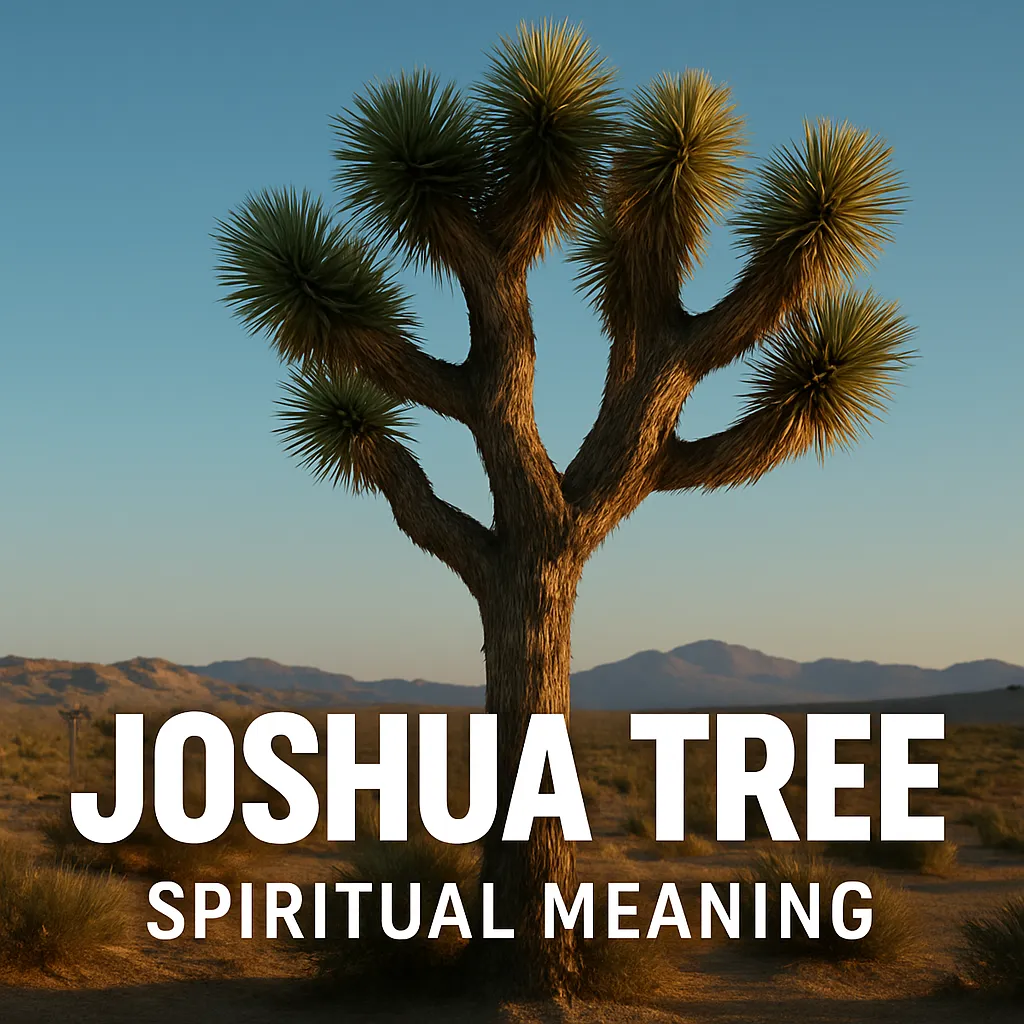|
Getting your Trinity Audio player ready...
|
Standing beneath the sprawling branches of an ancient oak, there’s an unmistakable feeling—a sacred whisper that connects us to something larger than ourselves. Through centuries and across continents, the oak tree’s spiritual meaning has remained a powerful constant in human spirituality. These magnificent beings, with their gnarled trunks and sprawling canopies, have witnessed the rise and fall of civilizations while embodying the perfect union of strength and vulnerability.
In Celtic traditions, oaks were revered as doorways between worlds, while biblical references position them as witnesses to divine covenants. The oak tree symbolism in marriage reflects enduring commitment, much like the tree’s centuries-long presence. Whether contemplating the fiery vitality of a red oak or seeking the wisdom hidden within the white oak’s silvery bark, these silent sentinels offer profound spiritual lessons for those willing to listen.
Table of Contents
- 1 Key Takeaways
- 2 The Oak in Ancient Spiritual Traditions
- 3 Symbolic Attributes of the Oak
- 4 Oak Tree Symbolism in Love and Marriage
- 5 The Oak’s Spiritual Meaning Across Color and Variety
- 6 The Oak in Dreams and Visions
- 7 Practical Oak Tree Spirituality
- 8 Modern Applications of Oak Wisdom
- 9 Oak Symbolism in Literature and Art
- 10 Common Misconceptions About Oak Spirituality
- 11 FAQ
- 11.1 What is the oak tree spiritual meaning in love?
- 11.2 What is the oak tree spiritual meaning in the Bible?
- 11.3 What is the oak tree symbolism in marriage?
- 11.4 What is the red oak tree spiritual meaning?
- 11.5 What is the white oak tree spiritual meaning?
- 11.6 What is the Celtic oak tree meaning?
- 11.7 What is the oak tree symbolism in literature?
- 11.8 What is the red oak tree symbolism?
- 12 Sources
Key Takeaways
- Oak trees symbolize divine connection across numerous spiritual traditions, serving as cosmic bridges between earthly and celestial realms.
- The oak’s resilience and longevity (living up to 1,000 years) makes it a powerful metaphor for enduring relationships, integrity, and steadfast faith.
- Different oak varieties carry unique spiritual energies—red oaks embody vitality and passion, while white oaks represent purity and spiritual illumination.
- Ancient cultures from Celts to Greeks considered oak groves sacred spaces for divination, communion with deities, and marking significant life transitions.
- Incorporating oak energy through meditation, rituals, or simply spending time beneath these mighty trees can foster psychological grounding and spiritual renewal.
The Oak in Ancient Spiritual Traditions
Celtic Reverence for Oaks
The Celtic relationship with oak trees runs soul-deep, embodying their most profound spiritual understandings. The very word “Druid” derives from the Celtic “dru-wid,” meaning “oak knowledge,” revealing how central these trees were to Celtic wisdom traditions. Druids conducted their most sacred ceremonies within oak groves called nemetons, believing these spaces existed at the threshold between worlds. The ogham letter “Duir” (oak) represented a doorway through which divine wisdom could flow into the human realm.
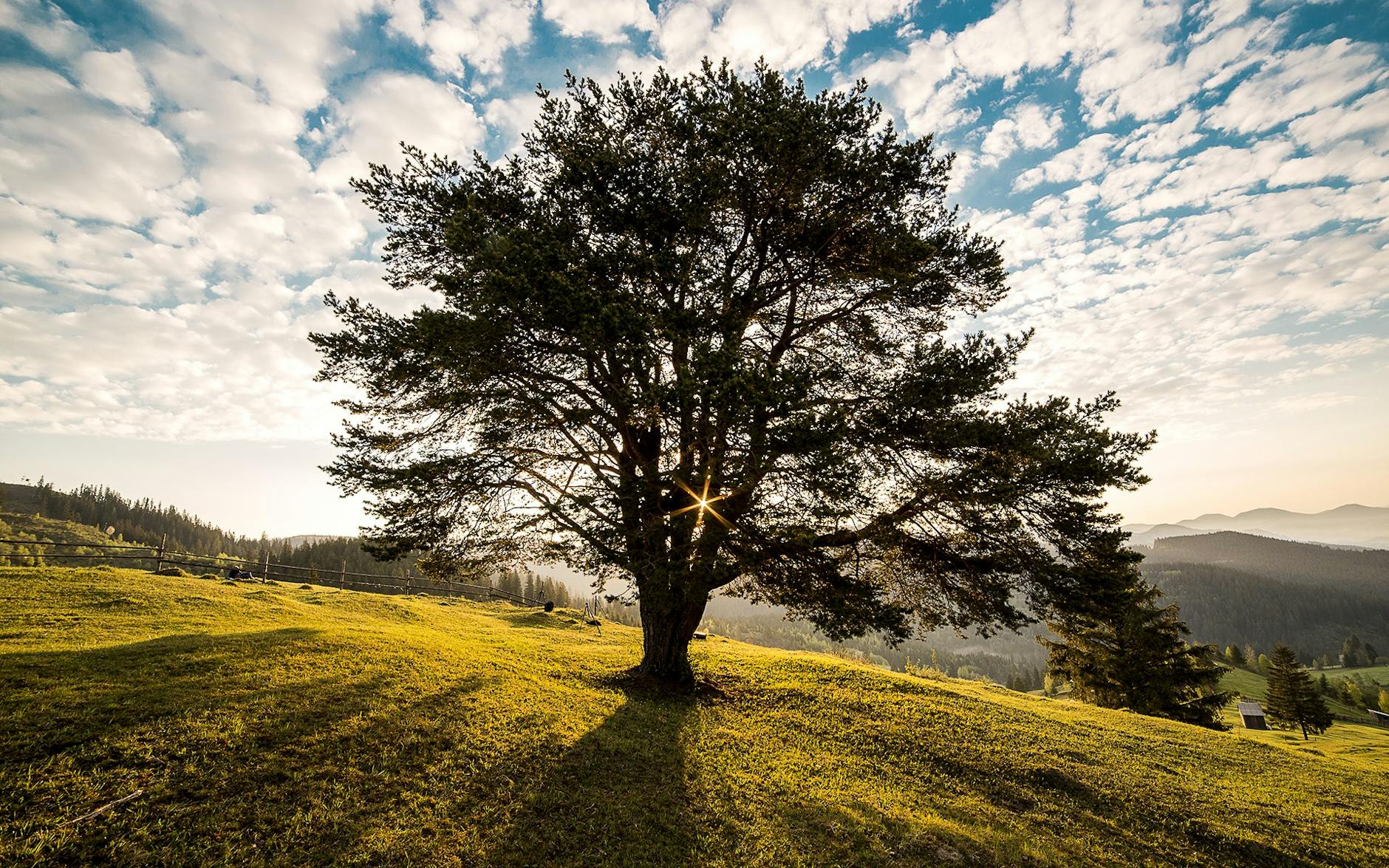
One of their most significant rituals, documented by Roman historian Pliny the Elder, involved harvesting mistletoe from oak trees using golden sickles in elaborate ceremonies. The mistletoe, growing between heaven and earth on the sacred oak, was considered a divine medicine and blessing—capable of bestowing fertility, protection, and healing. This reverence for oak continued even as Christianity spread through Celtic lands, with many early churches built deliberately in ancient oak groves to harness their spiritual power.
Greek Oracle Traditions
In ancient Greece, the oak grove at Dodona stood as one of the oldest oracular sites in the Greek world, dating back to approximately 2000 BCE. Here, priestesses known as Peleiades (doves) would interpret the rustling of oak leaves as direct messages from Zeus. These women would enter meditative states beneath the spreading branches, translating divine whispers carried on the wind through sacred leaves.
The connection between oaks and divination was so profound that pilgrims traveled from across the Mediterranean to sleep among the roots of these trees, believing that dreams experienced in their presence carried special prophetic significance. Archaeological evidence shows the remnants of bronze cauldrons hung in the branches, which would resonate with the wind to create sounds believed to be the voice of the divine. This oracle tradition lasted for nearly two millennia, making it one of the longest-standing spiritual practices in recorded history.
Slavic and Norse Connections
In Slavic traditions, the oak was sacred to Perun, the powerful thunder deity who ruled the skies. Communities would maintain perpetual fires of oak wood in his honor, and massive ancient oaks served as his earthly shrines. When lightning struck an oak tree, it was interpreted as Perun’s direct blessing or judgment upon the community. These lightning-struck trees became especially sacred, with their wood used to craft protective amulets.
Similarly, Norse mythology connected oaks to Thor, their thunder god, who offered protection through these mighty trees. While their cosmic world tree, Yggdrasil, was typically depicted as an ash, many scholars believe the qualities described—tremendous strength, longevity, and resilience—drew inspiration from oak trees. Both Slavic and Norse cultures saw oaks as embodiments of masculine protective energy, standing firm against forces of chaos and providing shelter to those who honored them.
Biblical References to Oaks
The Bible contains numerous significant references to oak trees, often marking sites of profound spiritual encounters. One of the most notable appears in Genesis, where Abraham meets three mysterious visitors under the oak of Mamre—an encounter many theologians interpret as a divine revelation. This meeting established a covenant that would shape the future of monotheistic faith traditions.
Throughout the Old Testament, oaks frequently mark places where God’s presence manifests. Joshua placed a stone of witness under an oak at Shechem (Joshua 24:26-27), while the Angel of the Lord appeared to Gideon under an oak tree in Ophrah (Judges 6:11). The oak tree spiritual meaning in the Bible often connects to divine testimony, covenant, and the enduring nature of God’s promises—much like the tree’s own remarkable longevity.
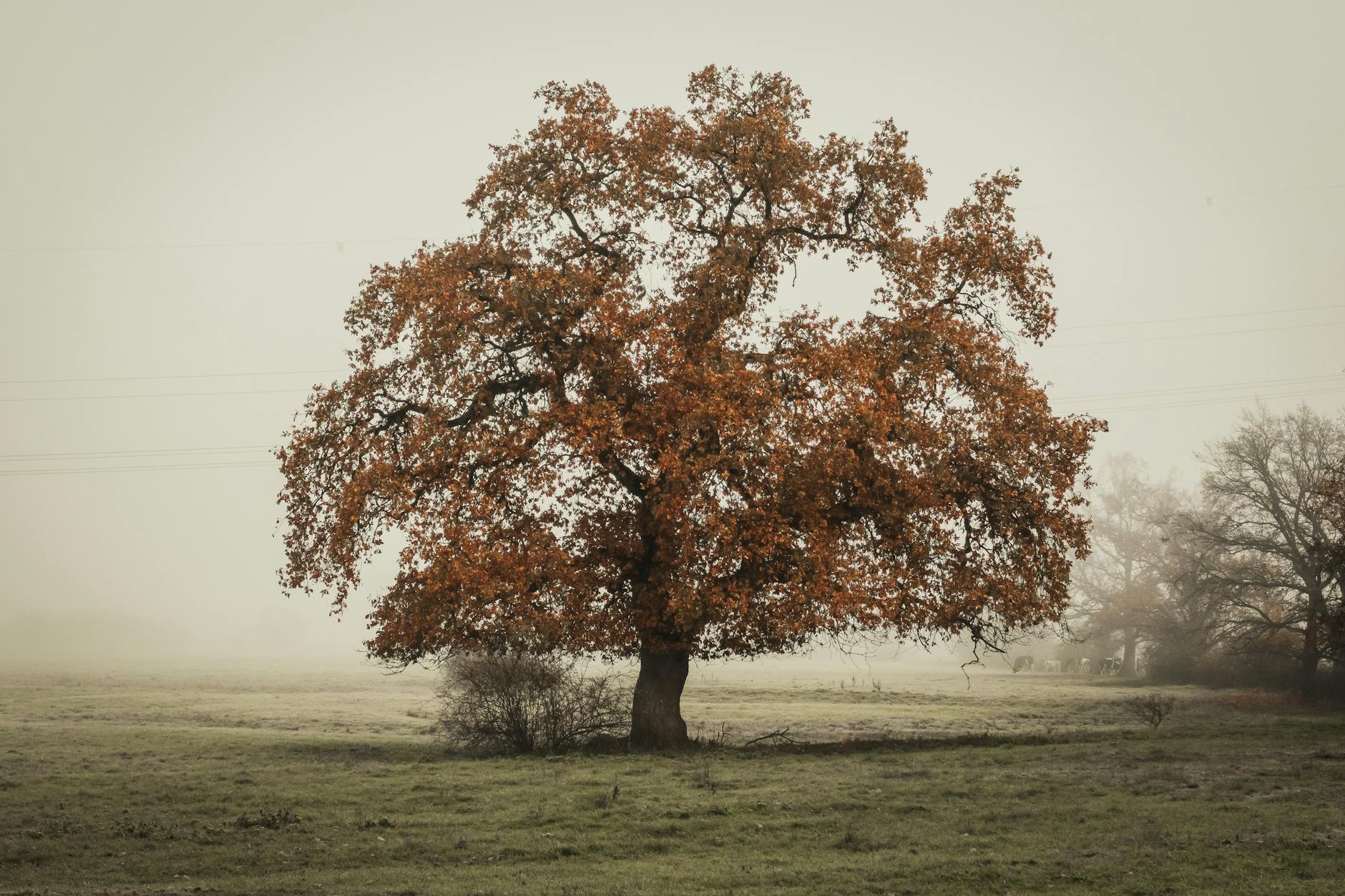
Symbolic Attributes of the Oak
Strength and Endurance
The oak’s physical qualities mirror its spiritual significance in striking ways. With roots diving as deep as the trunk rises high, these trees embody the magical balance between being firmly grounded while reaching toward higher consciousness. Their wood is known for its exceptional hardness and durability, which is why cultures across time have chosen it for sacred structures, ritual objects, and ceremonial spaces.
The metaphor of “having a heart of oak” speaks to spiritual resilience—the ability to withstand life’s storms without breaking. Oaks bend and sway in violent weather, their flexible branches allowing them to endure what more rigid trees cannot survive. This quality offers a profound spiritual teaching: true strength comes not from rigidity but from resilience, not from resistance but from deep rootedness coupled with adaptability. In meditation practices centered around oak energy, practitioners often visualize themselves embodying this balanced strength.
Kingship and Authority
Throughout history, oaks have been connected to concepts of rightful leadership and divine authority. Ancient kings were crowned with wreaths of oak leaves, symbolizing their role as mediators between heaven and earth. The oak’s ability to attract lightning—connecting sky and ground in a literal flash of power—embodied this intermediate position of true leadership.
In Greek tradition, Zeus (king of gods) spoke through oak trees, while in Celtic lore, chieftains and kings conducted important ceremonies beneath their branches, drawing on their gravitas and wisdom. This symbolism of rightful authority continues today in military and civilian honors that use oak leaf clusters to denote achievement and leadership. The spiritual lesson here extends beyond external authority to the development of inner sovereignty—learning to rule one’s own nature with the same balanced strength that the oak embodies.
Protection and Sanctuary
Oaks have long been revered for their protective qualities, both physical and metaphysical. Their tendency to attract lightning led to the paradoxical belief that they offered protection from it—standing under an oak that had already been struck was considered safe, as “lightning never strikes twice.” This protective aspect extended into spiritual realms, with oak groves historically serving as sanctuaries where fugitives could claim asylum.
The nurturing aspect of oaks cannot be overstated. A single ancient oak can support up to 500 different species of life, creating an entire ecosystem within and around itself. Spiritually, this represents the oak’s ability to offer sanctuary and support to diverse forms of consciousness. Many traditions teach that oak trees harbor nature spirits, fairies, or elemental beings, providing safe haven for entities that bridge the material and spiritual worlds. For those seeking protection in tumultuous times, meditation with oak energy offers a sense of being sheltered within something greater than oneself.
Doorways Between Worlds
In numerous spiritual traditions, the oak functions as an axis mundi—a cosmic pillar connecting underworld, middle world, and upper world. Its roots reach deep into the earth (representing the unconscious and ancestral wisdom), its trunk exists in our material realm, and its branches stretch toward celestial spaces. This three-world bridging makes the oak a natural conduit for spiritual work involving different planes of existence.
Hollow oaks hold special significance as literal doorways or portals in folklore and spiritual practice. Tales across Europe speak of fairies, elves, and spirits using hollow oaks as their entrances to otherworldly realms. Modern spiritual practitioners sometimes use meditation within the hollow of an ancient oak (or visualization of this experience) to facilitate journeying between worlds. The oak thus offers itself as both mentor and gateway for those seeking to explore beyond ordinary consciousness.

Oak Tree Symbolism in Love and Marriage
Partnership Symbolism
The oak tree presents a powerful symbol for enduring relationships, particularly in marriage traditions. Unlike flowers that bloom briefly, oaks represent lasting commitment through their centuries-long lifespans. Traditional handfasting ceremonies—precursors to modern weddings in Celtic lands—were often performed beneath oak trees to invoke their qualities of steadfastness and protection for the newly joined couple.
The intertwining of oak roots beneath the earth offers a profound metaphor for marital bonds. Though invisible to casual observation, these interconnected root systems provide mutual support and nourishment, much like the unseen emotional foundations of a healthy marriage. This oak tree symbolism in marriage reminds couples that the most important aspects of their relationship may not be visible to others but form the essential foundation that sustains them through life’s challenges.
Fertility Connections
Acorns represent one of nature’s most potent symbols of potential and new life. From these small seeds emerge trees that may live for a millennium—a powerful representation of how small beginnings can yield magnificent results. In ancient fertility rituals, couples hoping to conceive would carry acorns or place them under their mattress, believing in their generative power.
The oak’s abundant production of acorns—up to 50,000 in a good year—symbolizes generous abundance and the overflowing capacity to create new life. The tree’s nurturing qualities manifest in relationships as the ability to support growth and potential in one’s partner. In contemporary spiritual practice, some couples plant an oak sapling together, nurturing it as a living emblem of their growing love and as a legacy that will outlive them both.
Wedding Traditions
Throughout European history, oak leaves and acorns have been incorporated into bridal bouquets and grooms’ boutonnieres, symbolizing strength, fidelity, and the blessing of abundant life together. The tradition of pressing oak leaves in wedding books or preservation frames continues today as a meaningful reminder of these qualities.
A beautiful modern adaptation of ancient practice involves planting oak saplings at wedding ceremonies or on significant anniversaries. This ritual acknowledges that love, like the oak, starts small but grows steadily stronger with proper care and attention. Some couples choose to write vows or aspirations on biodegradable paper, burying them with the sapling’s roots as intentions for their life together. These living monuments can become family gathering places across generations, embodying the continuity of love beyond individual lifetimes.
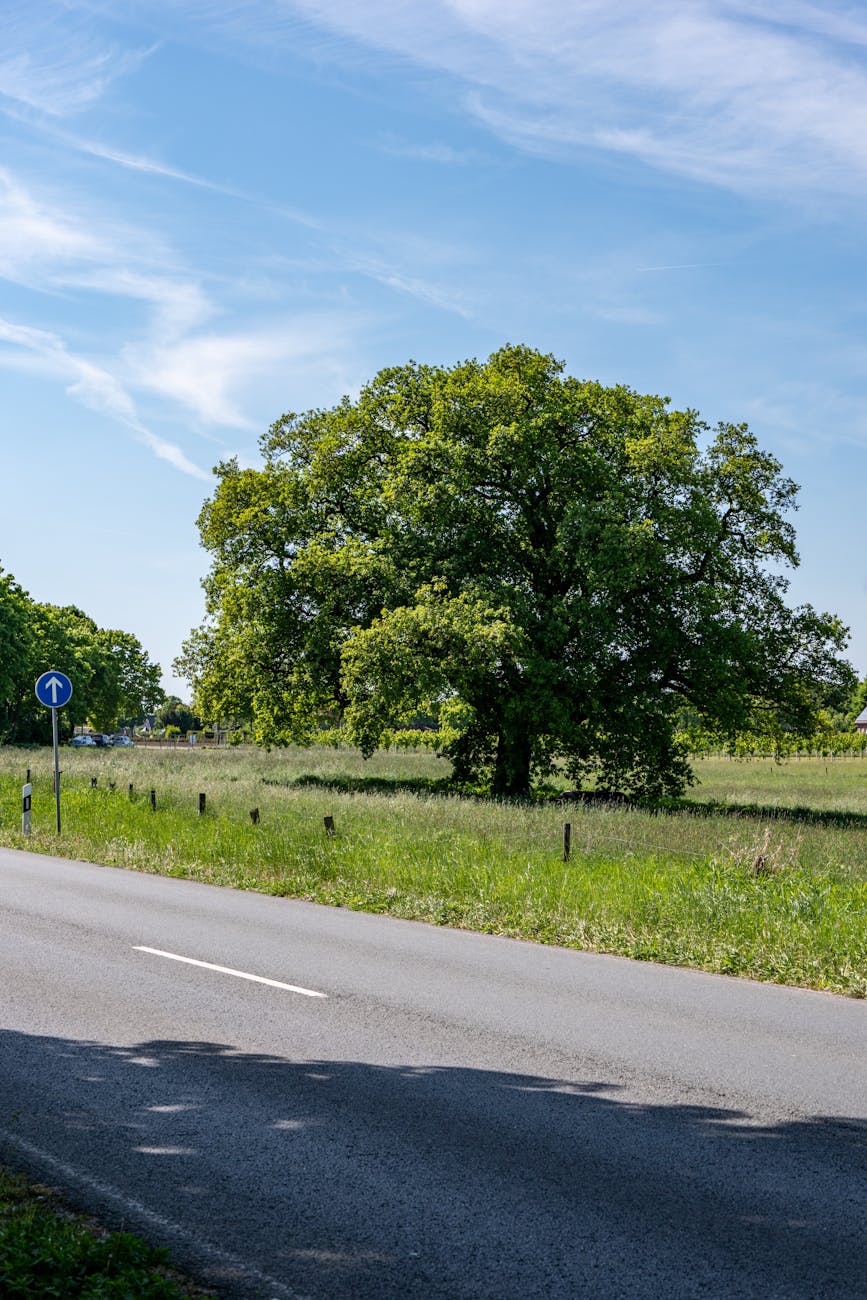
The Oak’s Spiritual Meaning Across Color and Variety
White Oak Spiritual Significance
The white oak carries distinct spiritual attributes that set it apart from other varieties. With its pale bark and rounded leaf lobes, it has long been associated with purity and spiritual illumination. In folk traditions across Europe and North America, the white oak was believed to offer clearer channels to divine guidance, making it particularly valued for meditation and prayer spaces.
In magical traditions, the white oak’s wood, bark, and leaves were used in purification rituals, believed to clear negative energies and create sacred space. Its lighter appearance connected it symbolically to moon energy and feminine divine principles, balancing the more masculine associations often attributed to oaks generally. The white oak spiritual meaning extends to truth-speaking and clarity of vision—qualities reflected in the remarkably straight grain of its highly prized wood, which was often used for divination tools and oracle objects.
Red Oak Spiritual Meaning
Red oaks, with their russet autumn colors and pointed leaf lobes, embody more fiery, vital energies than their white counterparts. These trees connect to life force, passion, and courage—the energetic qualities needed to manifest change in the world. In warrior traditions across cultures, red oak was often preferred for shields, symbolizing active protection rather than passive endurance.
The red oak tree spiritual meaning embraces transformation through its spectacular seasonal displays. Its vibrant autumn coloration makes it a powerful symbol for beautiful endings and necessary releases. In spiritual practice, red oak energy is invoked when passion and determined action are required—for protection, for creative endeavors, or for breaking through obstacles. The red oak teaches that vitality and strength can be expressed with beauty and even flamboyance, challenging our assumptions about what power looks like.
Ancient and Landmark Oaks
Certain individual oaks have achieved legendary status through their extraordinary age or historical significance. Trees like the Major Oak of Sherwood Forest (estimated to be 800-1,000 years old) or the Angel Oak of South Carolina (1,500+ years) have become living shrines that draw pilgrims seeking connection with something that transcends human lifespans.
These ancient sentinels hold special spiritual energy, having witnessed centuries of human history while remaining rooted in something more enduring. Many spiritual practitioners believe these trees function as natural record-keepers, storing energetic imprints of events that have transpired around them. Meditation beside such ancient beings often produces profound experiences of temporal shift—a sense of connecting with deep time rather than human time. These landmark trees remind us of our relative youth as individuals while connecting us to the continuity of life across generations.
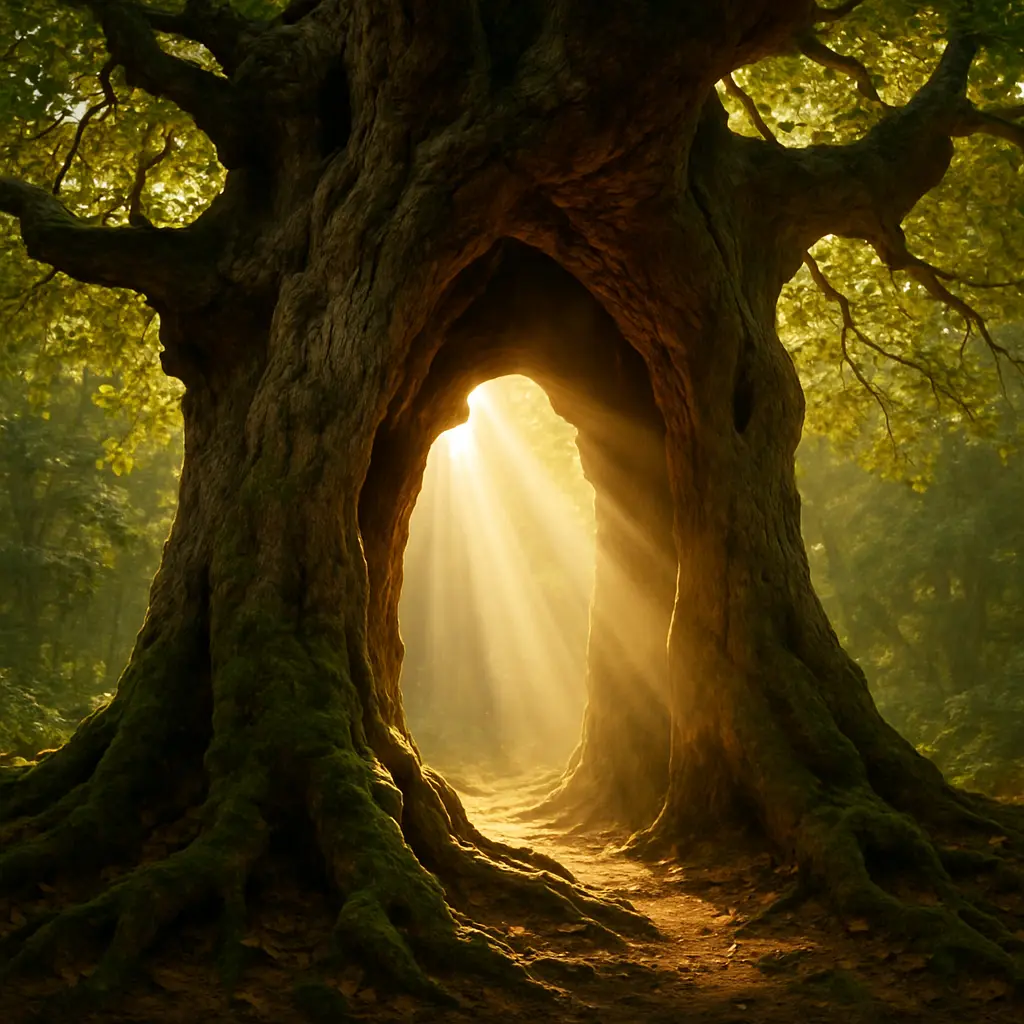
The Oak in Dreams and Visions
Interpreting Oak Dreams
Seeing oak trees in dreams typically symbolizes strength, protection, and connection to ancestral wisdom. According to Jungian psychology, the oak often represents the archetype of the Self—the integrated wholeness toward which personal development strives. Dreams of climbing oaks may indicate spiritual ascension or the quest for higher perspective, while falling oaks might signal fears about losing stability or authority in waking life.
Dreams where oak trees flower or produce abundant acorns often relate to potential and new beginnings, particularly when they appear in spring. Conversely, dreams of dead or lightning-struck oaks might indicate necessary endings or transformative upheaval. The context matters enormously—an oak being cut down by others might suggest external threats to one’s integrity, while personally harvesting oak branches could indicate willingly drawing on inner resources and strength. The emotional tone of the dream provides essential clues to its personal meaning.
Meditation with Oak Energy
Connecting with oak consciousness through meditation offers profound grounding and centering. A simple yet powerful practice involves sitting with your back against an oak trunk (or visualizing this if no physical oak is available). Begin by focusing on your breathing, then gradually expand your awareness to sense the tree’s energy behind and supporting you.
Visualize your energetic body developing roots that intertwine with those of the oak, extending deep into the earth. Then imagine your awareness rising through your spine and continuing upward through the trunk and branches of the tree, expanding into the sky. This practice creates a profound experience of the axis mundi concept, connecting underworld, middle world, and upper world through your own energetic system. Many practitioners report receiving intuitive insights, answers to questions, or simply a profound sense of belonging to something larger than themselves.
Oak as Spiritual Teacher
The oak offers wisdom through its very nature and growth patterns. Unlike faster-growing trees, oaks develop slowly but tremendously durably—”the slower the growth, the sounder the timber” applies both physically and metaphorically. This teaches patience and long-term perspective, reminding us that meaningful development rarely happens overnight.
The oak’s seasonal cycles demonstrate the wisdom of appropriate timing—when to extend energy outward (spring), when to fully express (summer), when to release what’s completed (autumn), and when to turn inward for restoration (winter). For those feeling scattered or energetically depleted, oak trees serve as natural teachers of energy management and conservation. Their ability to draw excess electrical energy from the atmosphere during storms parallels the spiritual practice of grounding excess emotional or mental energy through connection with earth elements.
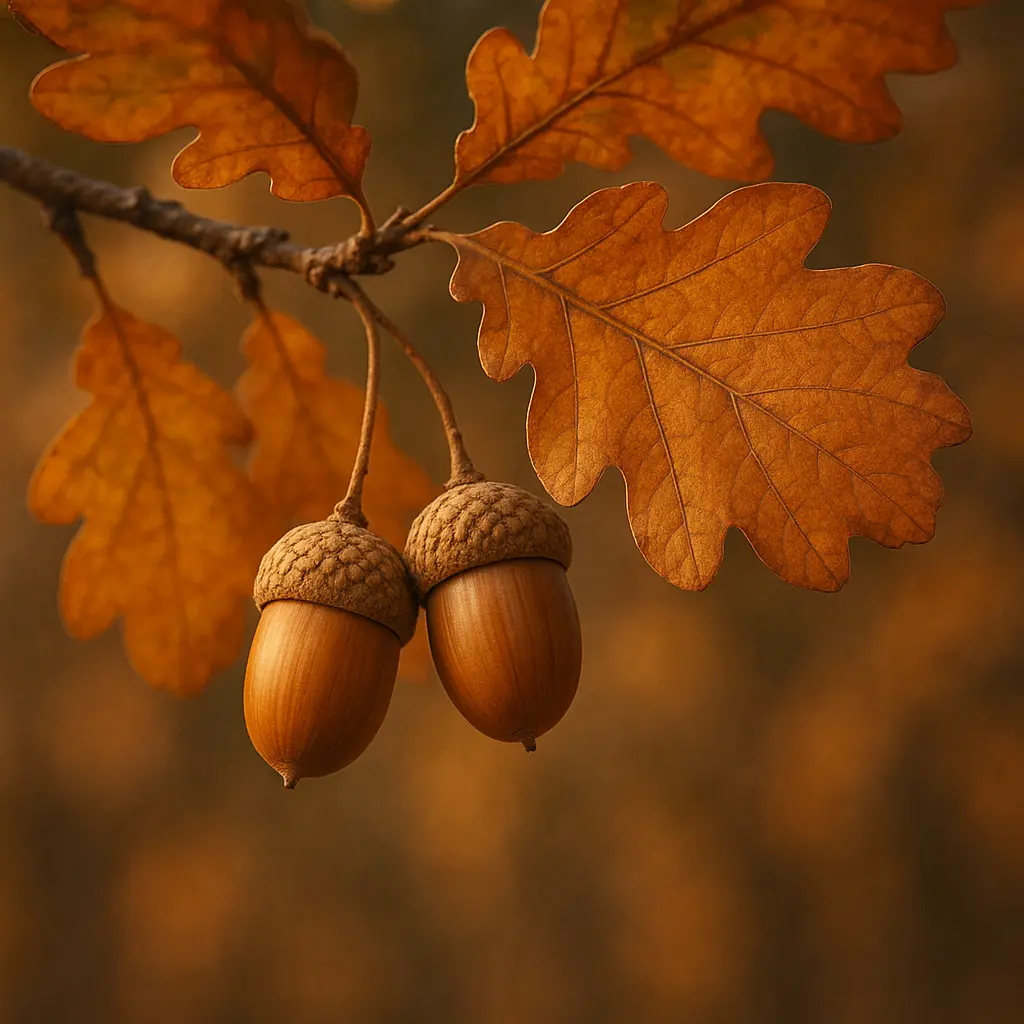
Practical Oak Tree Spirituality
Creating Sacred Connections
Building a meaningful relationship with an oak begins with approach and intention. When seeking to connect with a specific oak tree, practitioners recommend approaching respectfully, as you would a wise elder. Some traditions suggest bringing a small biodegradable offering—water, organic cornmeal, or a song—acknowledging the tree as a conscious entity rather than an inanimate object.
Regular visits deepen this connection, creating a relationship that evolves over time. Many people find that sitting quietly with the same oak regularly leads to a sense of recognition and welcome from the tree itself. Ethical considerations are important—take nothing from a living oak without explicit permission (felt intuitively or requested verbally), and never harm the tree through carving or other damaging practices. The most profound connections form through consistent, respectful presence rather than demands or expectations.
Rituals and Ceremonies
Solstice celebrations incorporating oak symbolism connect practitioners to ancient traditions while addressing contemporary spiritual needs. At summer solstice, when the oak’s strength is at its peak, ceremonies might honor the fullness of manifestation and the courage to stand in one’s power. Winter solstice rituals often focus on the enduring life within the seemingly dormant oak, celebrating inner light during dark times.
Prosperity rituals using acorns draw on their symbolic potential for abundance. A simple practice involves selecting an acorn that feels especially vital, charging it with specific intentions, and carrying it as a talisman. Alternatively, planting an acorn with prayers for prosperity creates a living embodiment of your intentions. Grounding practices against the trunk of an oak offer remarkable benefits for those experiencing anxiety, scattered energy, or disconnection—research shows measurable decreases in stress hormones after just 15 minutes of contact with trees, with oaks being particularly effective.
Oak in Healing Practices
Traditional medicinal uses of oak include bark preparations for reducing inflammation and healing wounds. The tannins present in oak bark possess natural astringent and antiseptic properties, which explains its historical use in treating skin conditions and digestive issues. While modern herbalists still work with these properties, contemporary healing often focuses on the energetic and psychological benefits of oak connection.
Forest bathing research (shinrin-yoku) specifically highlights oak forests for their ability to reduce cortisol levels by 15-20% after just 40 minutes of exposure. The combination of beneficial phytoncides released by oaks and their electromagnetic field creates measurable shifts in human physiological markers of stress. For emotional healing, some practitioners use oak essence or simply time spent with oaks to address issues of boundaries, self-protection, and resilience—learning from the tree’s natural embodiment of these qualities.
Working with Oak in Daily Life
Creating home altars with oak elements—leaves, acorns, small branches (gathered with permission or naturally fallen)—establishes a connection to oak energy in daily environments. These sacred spaces serve as focal points for intention, gratitude practice, or simply moments of mindful awareness. Some practitioners change their oak altar items seasonally to stay attuned to natural cycles.
Carrying acorn talismans offers portable protection and strength. Traditional practices suggest carrying an acorn in a pocket or pouch during challenging situations, job interviews, or when extra courage is needed. For daily meditation, incorporating visualizations of oak imagery can establish a stable inner reference point—many people imagine themselves seated against a mighty oak trunk when seeking to feel supported or developing their own inner authority.
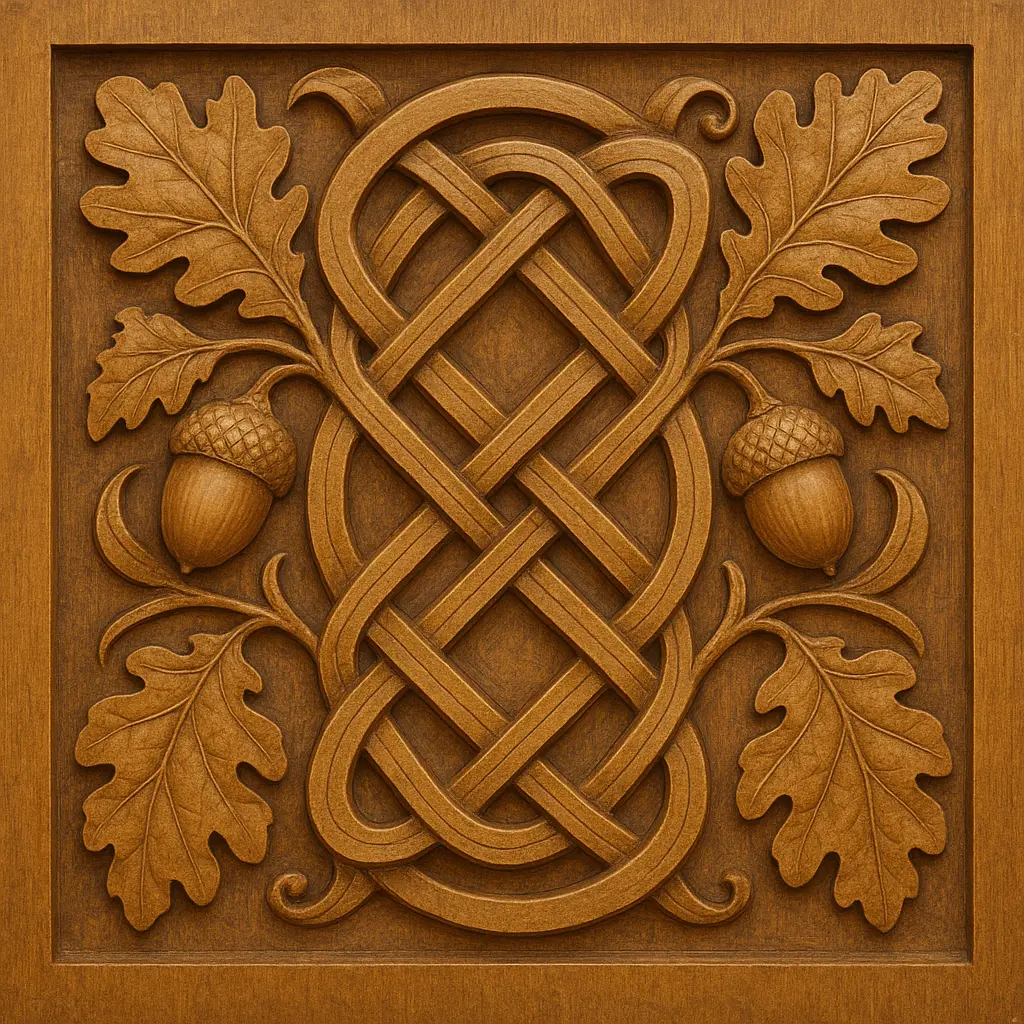
Modern Applications of Oak Wisdom
Environmental Spirituality
The oak serves as a profound teacher of ecological interdependence. A mature oak creates habitat for hundreds of species, demonstrating how true strength nurtures diversity rather than dominating it. This ecological role models how human leadership might operate—creating conditions where many different forms of life can flourish rather than establishing monocultures.
Conservation efforts gain spiritual dimension when informed by traditional reverence for oaks. Many contemporary environmental groups deliberately draw on ancient wisdom about sacred groves when protecting old-growth forests, finding that spiritual arguments sometimes reach people who remain unmoved by purely scientific ones. The oak’s ability to sequester carbon, mitigate flooding, and create biodiversity hotspots aligns ancient spiritual understanding with modern ecological science in remarkable ways.
Psychological Resilience
Learning steadfastness from the oak’s example offers powerful psychological benefits in our fast-paced, often rootless modern world. The oak demonstrates that genuine stability comes not from rigidity but from deep rootedness coupled with flexibility—a lesson directly applicable to emotional resilience.
The oak’s growth rings—adding new layers while retaining all previous ones—provide a beautiful metaphor for healthy integration of life experiences. Rather than rejecting difficult past experiences, this model suggests incorporating them as part of our expanding self-understanding. For processing grief and life transitions, oak symbolism offers particular comfort through its embodiment of continuity amid change—the oak loses all its leaves annually yet remains recognizably itself, teaching that we can release aspects of our experience without losing our essential nature.
Community Building
Throughout history, oaks have created natural gathering spaces where communities formed bonds, resolved conflicts, and celebrated together. The traditional village oak or “council oak” served as a central meeting point, offering both practical shelter and symbolic gravitas to community decisions.
Modern groups reviving oak-centered community rituals find them remarkably effective for building social cohesion. Whether through regular gatherings in oak groves, community planting projects, or celebrations marking seasonal changes through the oak’s cycle, these practices create meaningful connection in an often fragmented social landscape. Creating “council circles” inspired by ancient oak groves—where all voices receive equal respect and decisions aim for the highest good of the community—draws on traditional wisdom to address contemporary challenges in group dynamics.
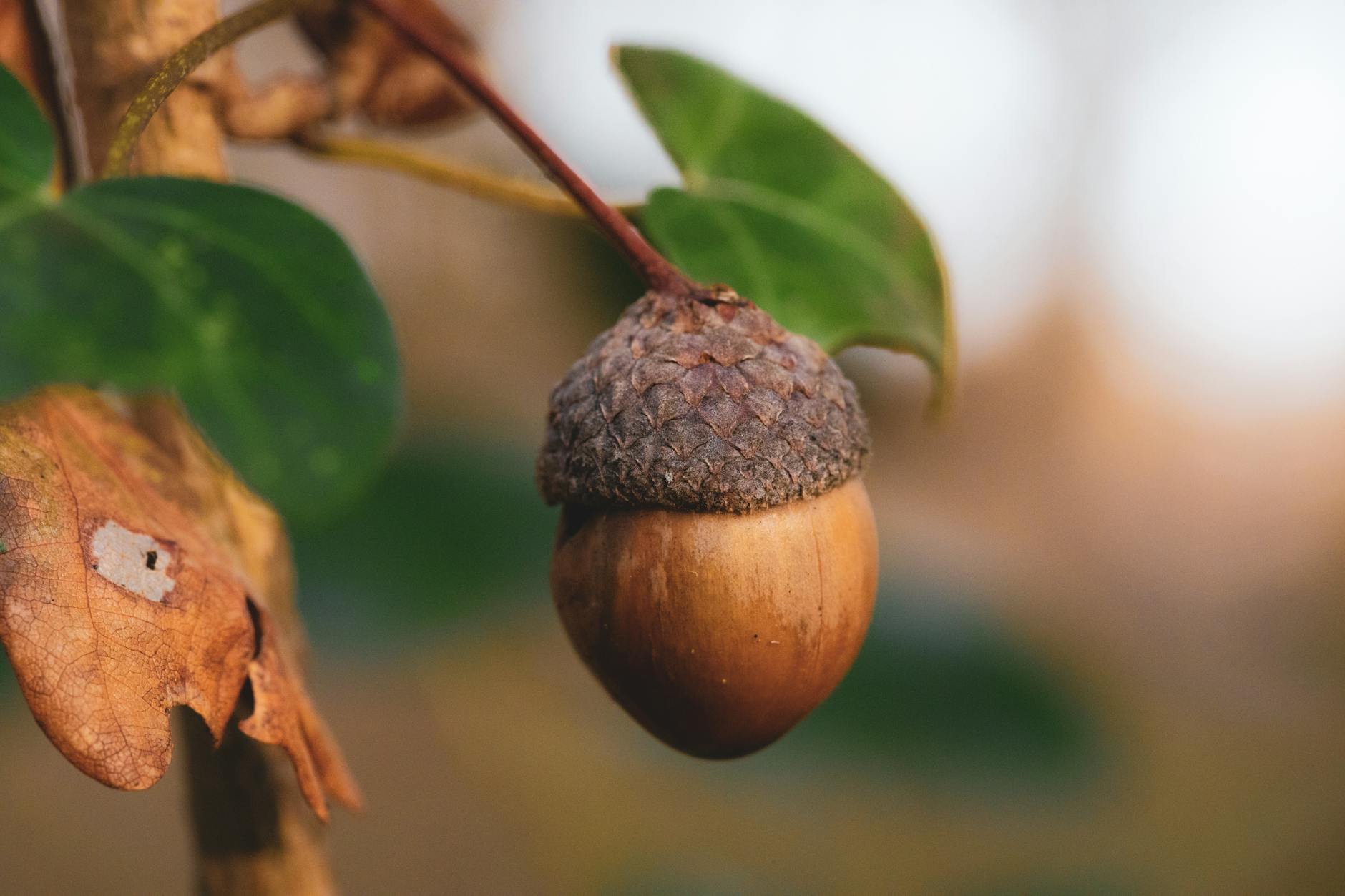
Oak Symbolism in Literature and Art
Literary Representations
The oak’s symbolic presence runs deep through literary tradition. Shakespeare frequently invoked oak tree symbolism in literature to represent steadfastness and noble character, while Tolkien’s ents (particularly Treebeard) carry clear oak attributes in their patient strength and deep wisdom. From Blake’s spiritual visions to Thoreau’s transcendental observations, the oak appears repeatedly as a symbol of integrity, endurance, and natural wisdom.
Poets across centuries have celebrated the oak’s paradoxical nature—mighty yet gentle, imposing yet welcoming. Robert Frost’s “Tree at My Window” contrasts human inner weather with the oak’s outer weathering, while Mary Oliver’s oak observations connect readers to something beyond human timeframes. Contemporary nature writers continue this tradition, finding in the oak a perfect metaphor for resilient presence in a world of accelerating change.
Common Misconceptions About Oak Spirituality
Clarifying Cross-Cultural Differences
Oak symbolism varies significantly between traditions, despite surface similarities. While both Celtic and Slavic cultures revered oaks, the Celtic focus on wisdom and doorways between worlds differs from the Slavic emphasis on protective warrior energy and divine judgment. Understanding these nuanced differences prevents inappropriate cultural blending that might distort traditional meanings.
Regional variations matter tremendously—Mediterranean evergreen oaks carry different associations than deciduous northern European varieties. Native American traditions related to oak trees differ from European ones, though some interesting parallels exist, particularly regarding the oak’s role in connecting worlds. Approaching these traditions with cultural sensitivity means acknowledging these specificities rather than treating “oak spirituality” as a single, homogeneous practice.
Addressing Historical Confusions
A common misconception equates reverence for oaks with “worship” of the trees themselves. Historical evidence suggests a more nuanced understanding—ancient peoples typically viewed oaks as conduits or embodiments of divine presence rather than as deities themselves. The oak served as a meeting point between human and divine realms, not as the ultimate object of devotion.
Another confusion arises from the assumption that “all sacred world trees are oaks.” While oaks feature prominently in many traditions, other trees held central cosmic positions in different mythologies—Yggdrasil as ash in Norse tradition, or the linden in some Slavic cosmologies. The qualities these world trees embody often share characteristics with oaks (strength, longevity, connection), but recognizing the diversity of sacred trees prevents oversimplification of complex spiritual systems.
FAQ
What is the oak tree spiritual meaning in love?
In matters of love, the oak represents steadfast devotion and deep-rooted connection. Its intertwining roots symbolize how healthy relationships grow stronger through shared experiences. Oak energy helps relationships weather difficult seasons while maintaining core integrity—teaching that true love balances independence with deep connection, much like the oak stands alone yet supports countless other lives.
What is the oak tree spiritual meaning in the Bible?
In biblical tradition, oak trees frequently mark sites of divine covenant and revelation. Abraham received heavenly visitors beneath the oak of Mamre, while Joshua placed a stone of witness under an oak at Shechem. These trees represented God’s enduring presence and promises—steadfast through generations just as the oak endures through centuries, offering both witness and shelter to faith journeys.
What is the oak tree symbolism in marriage?
Oak trees symbolize the ideal qualities of lasting marriages: strength, protection, and steady growth. Their ability to withstand storms while continuing to flourish parallels resilient partnerships. Traditional handfasting ceremonies performed under oaks invoked the tree’s longevity and stability for the couple’s union, while the intertwining root systems represented mutual support beneath the visible relationship.
What is the red oak tree spiritual meaning?
Red oaks embody passionate, vital energy through their fiery autumn colors and pointed leaf formations. They represent courage, life force, and transformative power. In spiritual practice, red oak energy supports breaking through obstacles, protective actions, and creative manifestation. Their spectacular seasonal displays teach that expressing full vitality can coexist with natural cycles of release.
What is the white oak tree spiritual meaning?
White oaks connect to purification, clarity, and spiritual illumination through their lighter appearance and rounded leaf formations. They’re associated with lunar energy, truth-speaking, and clear channels of divine guidance. In magical traditions, white oak was preferred for purification rituals and creating sacred space, believed to offer especially clear connection to higher wisdom.
What is the Celtic oak tree meaning?
In Celtic tradition, the oak (duir) represented the doorway between worlds, kingship, and divine wisdom. The Druids (whose name means “oak knowledge”) conducted their most sacred rituals in oak groves, harvesting mistletoe from oaks during elaborate ceremonies. The oak embodied strength, integrity, and the ability to channel cosmic forces into earthly application.
What is the oak tree symbolism in literature?
Throughout literature, oaks consistently symbolize endurance, nobility, and wisdom. Shakespeare used oaks to represent steadfast character, while Tolkien’s ancient ents carry distinctly oak-like qualities. From Blake’s spiritual visions to Thoreau’s nature observations, oaks appear as emblems of integrity and continuity, offering literary characters and readers alike models of principled strength.
What is the red oak tree symbolism?
Red oaks symbolize active rather than passive strength—the courage to stand visible in one’s power. Their vibrant autumn transformation teaches that change can be both magnificent and necessary. In warrior traditions, red oak represented protective action and the willingness to defend what matters. Today, their energy supports breaking through limitations and expressing one’s authentic life force.
